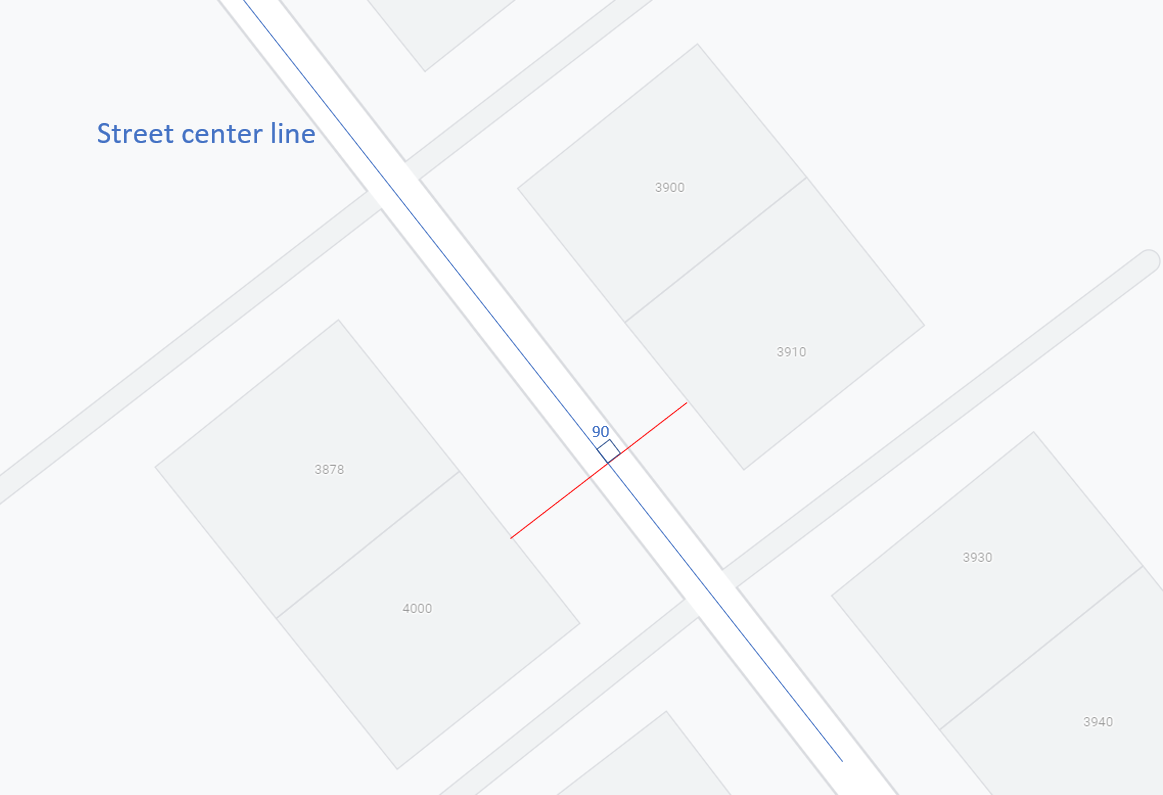Hello there
we looking to calculate the distance between 2 opposite buildings across a street, if we use a neighborhood finder it will not work
Any idea
Thanks

Hello there
we looking to calculate the distance between 2 opposite buildings across a street, if we use a neighborhood finder it will not work
Any idea
Thanks

@boubcher What isn't working with the NeighborFinder? Your buildings and Street center line appear to be parallel to each other.
@boubcher What isn't working with the NeighborFinder? Your buildings and Street center line appear to be parallel to each other.
@danatsafe the neighborfinder is getting the adjacent building, not the opposite one, and some time the build are not parallel to the streets
Thanks
@danatsafe the neighborfinder is getting the adjacent building, not the opposite one, and some time the build are not parallel to the streets
Thanks
Hi @boubcher
Please, could you share your data?
Thanks in Advance,
Danilo
@danatsafe the neighborfinder is getting the adjacent building, not the opposite one, and some time the build are not parallel to the streets
Thanks
sure please take a look at the sample data
Thanks
Your sample buildings are quite simple, without any bulges or indentations, parallel to the street center line, and all at a uniform distance from the street center line.
Also a building is clearly opposite another building, or there is no building across the street.
And the street center line is almost straight.
For your sample data the following steps give you the distance between 2 opposite buildings:
 For more complex data the procedure may also be more complex. Good luck!
For more complex data the procedure may also be more complex. Good luck!
Your sample buildings are quite simple, without any bulges or indentations, parallel to the street center line, and all at a uniform distance from the street center line.
Also a building is clearly opposite another building, or there is no building across the street.
And the street center line is almost straight.
For your sample data the following steps give you the distance between 2 opposite buildings:
 For more complex data the procedure may also be more complex. Good luck!
For more complex data the procedure may also be more complex. Good luck!
Thanks for the workspace great approach, the only problem is we don't know the buffer value in advance
what we are looking for is to calculate the street width based on the average distance between opposite buildings facing the same street segment which we don't know in advance
the approach will be applied to the entire city
The attached sample will illustrate the data better
Your sample buildings are quite simple, without any bulges or indentations, parallel to the street center line, and all at a uniform distance from the street center line.
Also a building is clearly opposite another building, or there is no building across the street.
And the street center line is almost straight.
For your sample data the following steps give you the distance between 2 opposite buildings:
 For more complex data the procedure may also be more complex. Good luck!
For more complex data the procedure may also be more complex. Good luck!
That is not quite the same question.
I would do something like this:
1. Ensure your centerlines layer is topologically correct (make sure they are all connected, and have vertices on all intersections)
2. Make polygons of the areas between the centerlines
3. Aggregate all buildings to building blocks within these polygons
4. Calculate all distances between the different building blocks
5. Construct the connecting lines between the building blocks
6. Determine which connecting lines cross which centreline
7. For each centreline get the length of the shortest crossing line